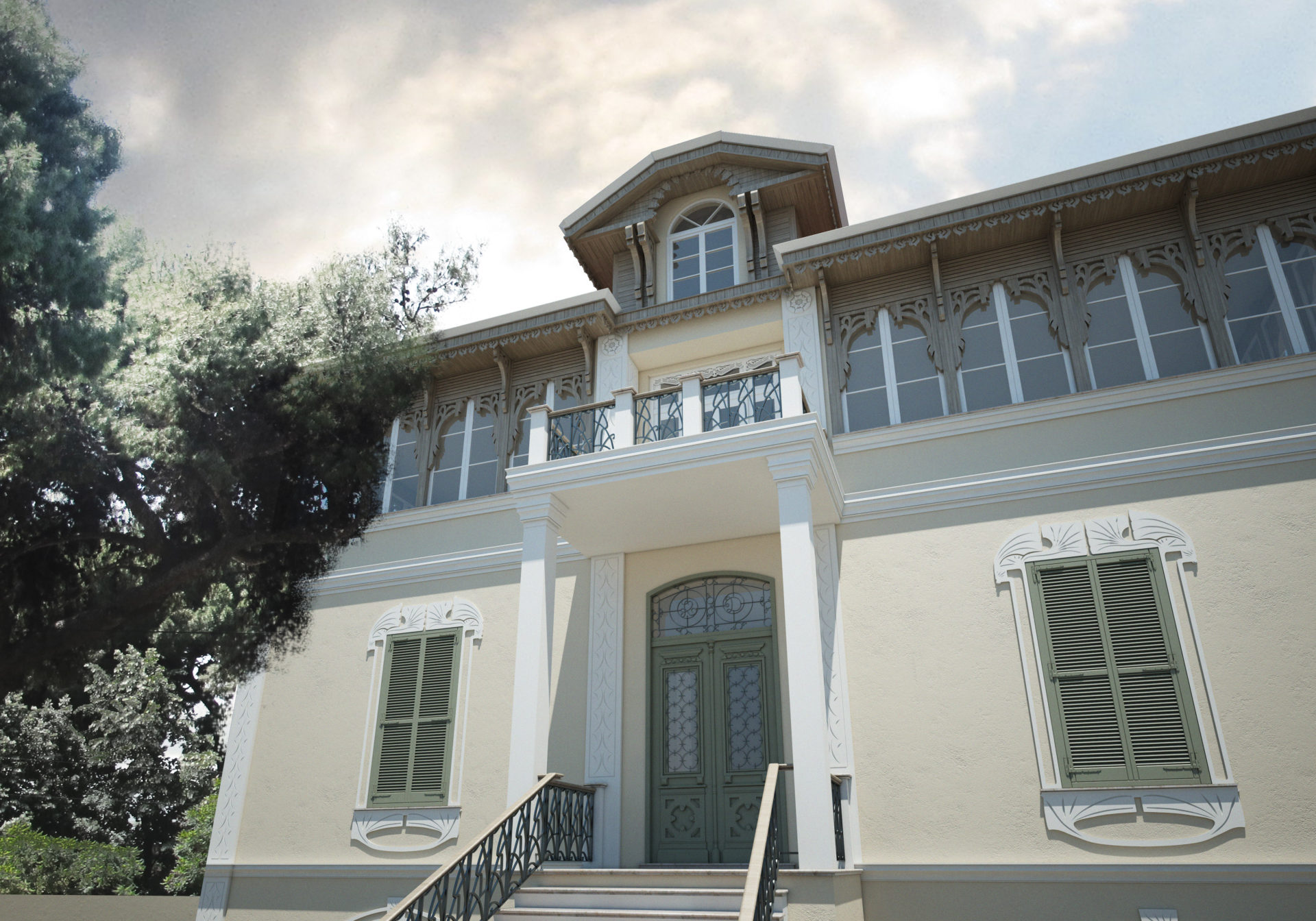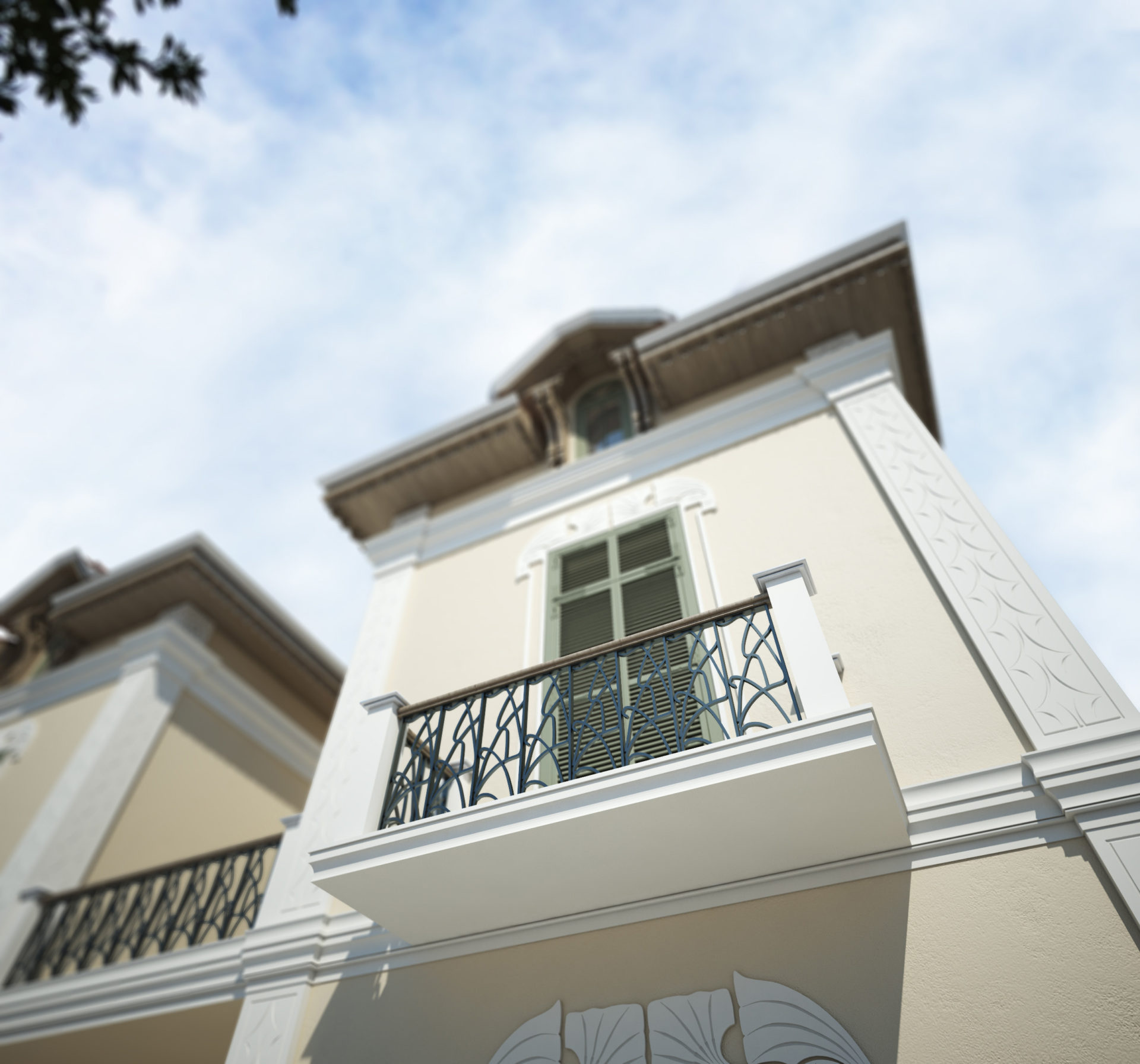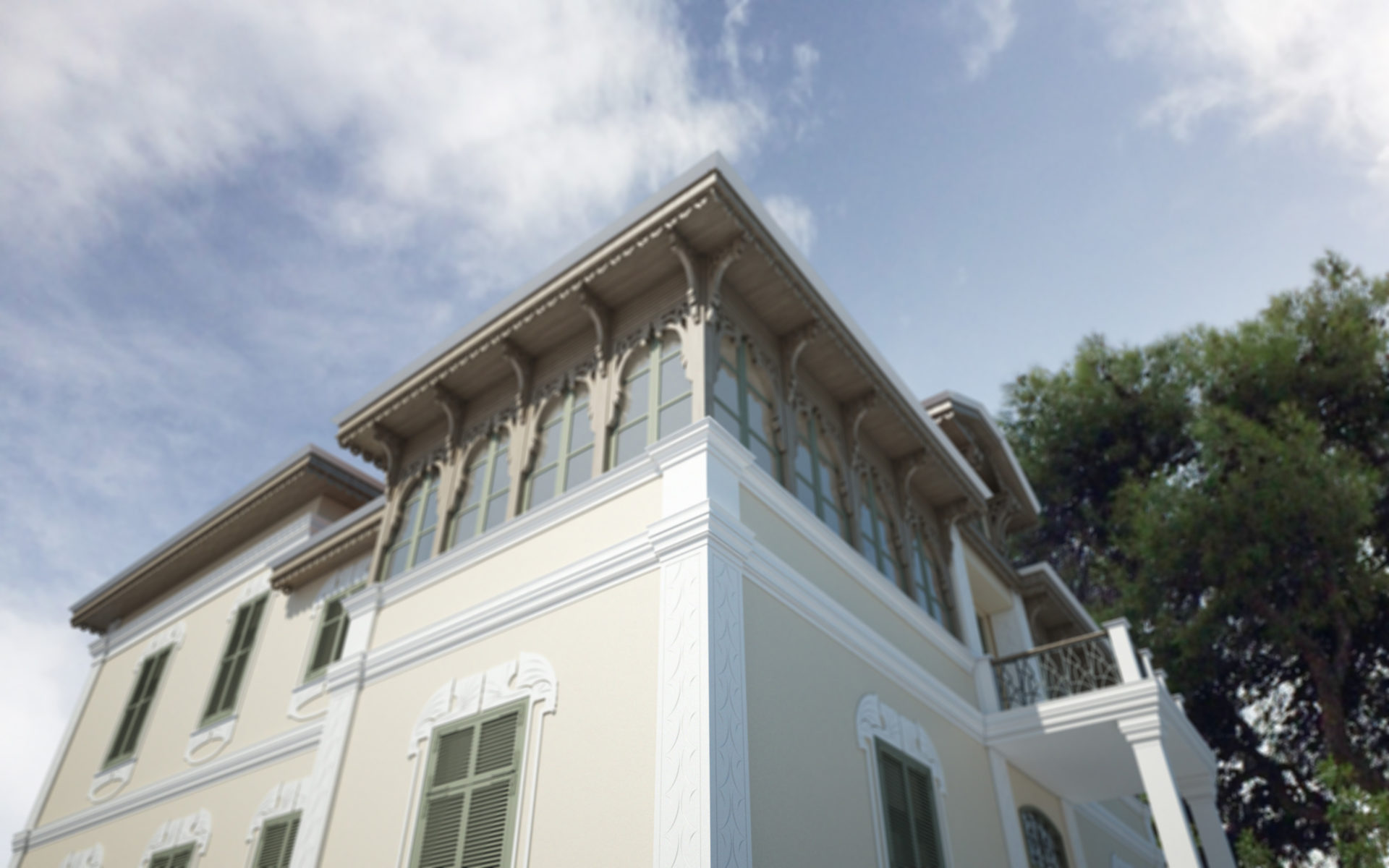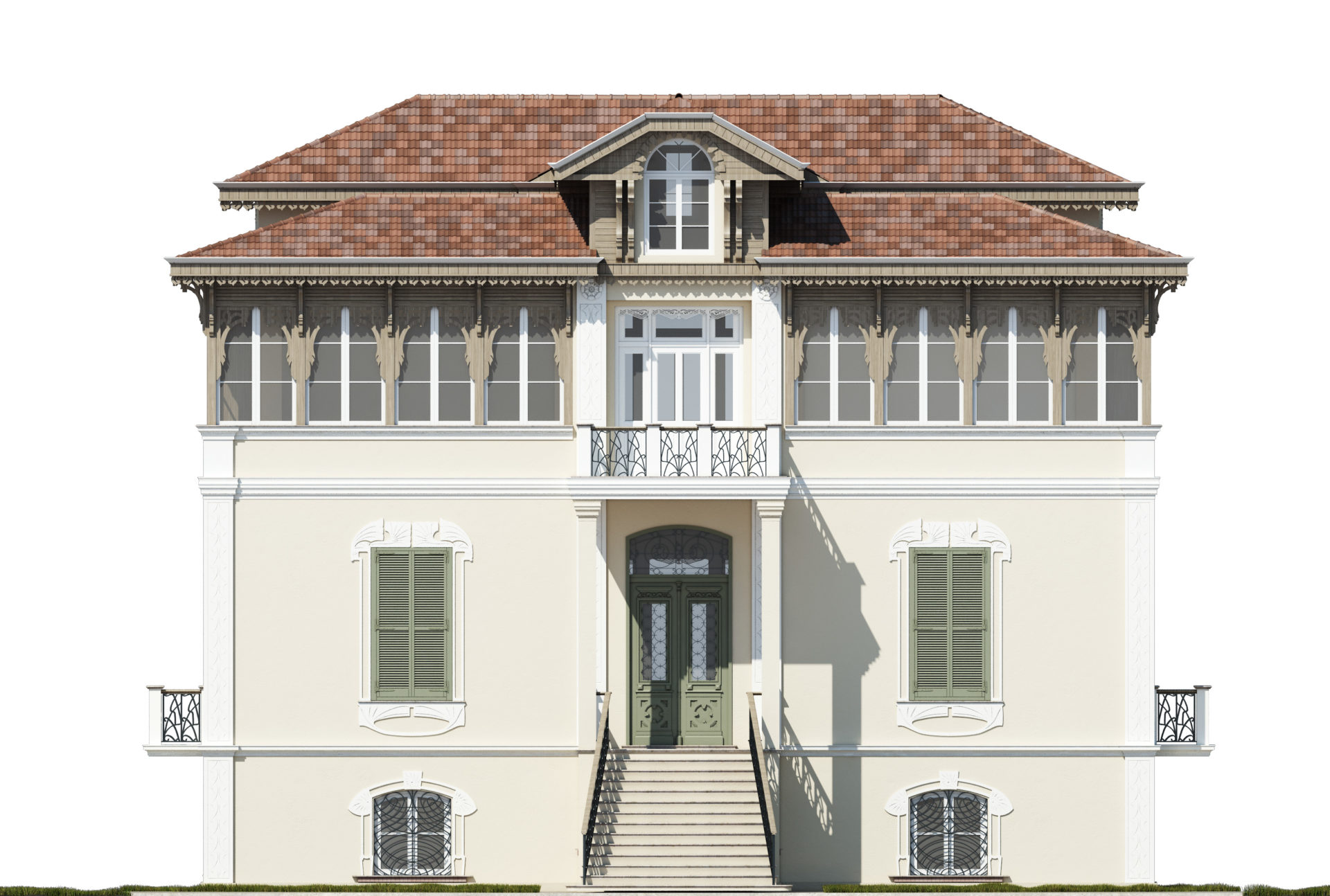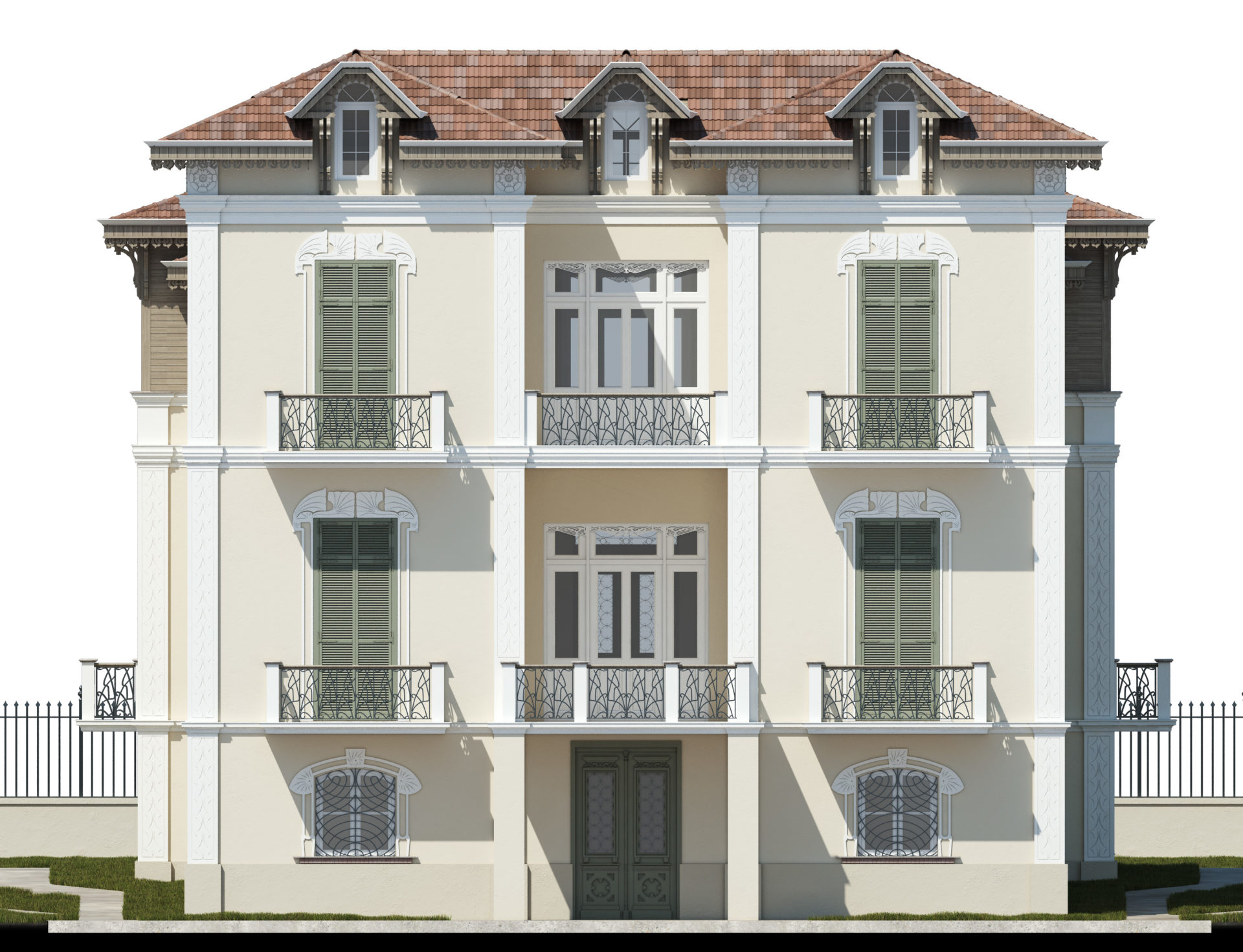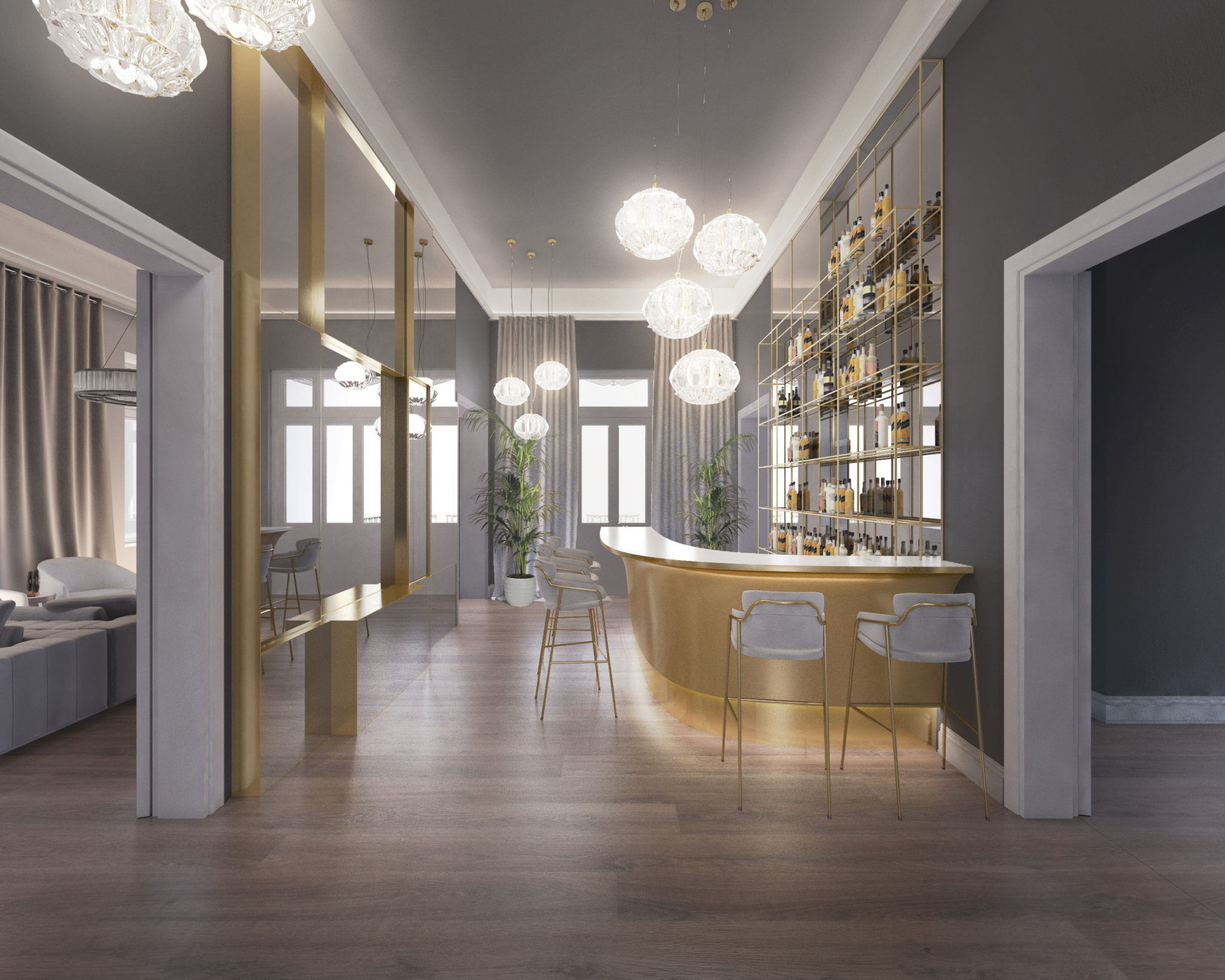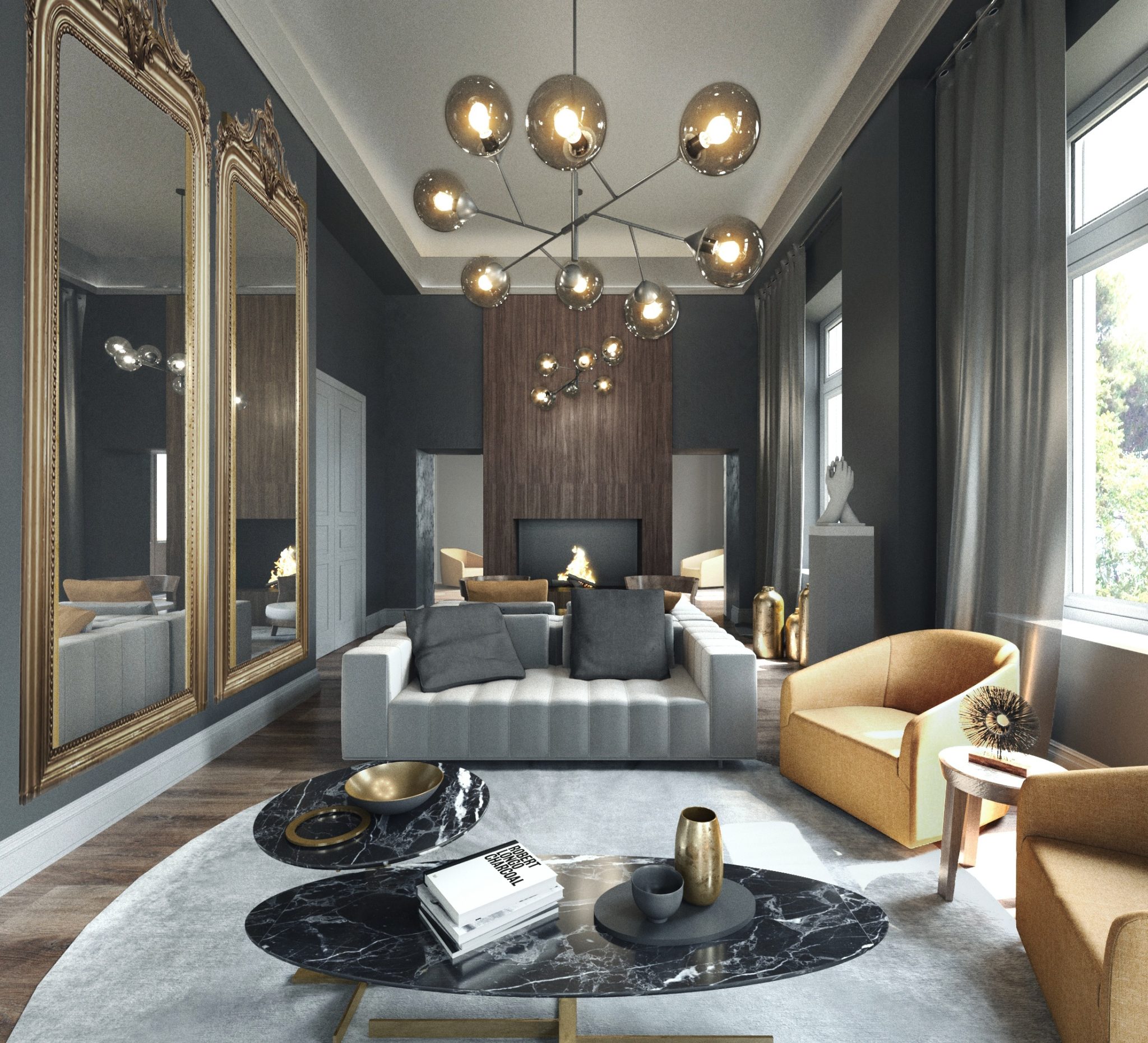Villa Morpurgo
The project concerns the conservation, restoration and change of use of Villa Morburgo into a Luxury Private Club House. The new Club House will host a library, co-working rooms, private restaurant, lounge area with fireplace, Cigar room, and a wine cellar.
Vila Morpurgo was designed by the famous architect Vitaliano Poselli and was built in 1905 in the area Exochon “Area of Coastal Vilas” in Thessaloniki. The morphological rhythm that had a catalytic effect on the form of the villas in the area of “Exochon” was eclecticism. Eclecticism was applied as a combination of morphological pluralism, consisting in the coexistence of Byzantine, Renaissance, Neoclassical, Baroque and other elements. In Thessaloniki at the end of the 19th and the beginning of the 20th century, the economic and social rise of the merchant class is expressed first by the choice of the countryside area for summer and then permanent living and then by the luxury and uniqueness of the same of the residence. Their well-traveled owners wanted to incorporate the new forms and styles they found abroad and especially in Europe. However, despite the western influences of eclecticism, which prevailed in Europe at that time, centered on the “Ecole des Beaux Atrts” in Paris, Thessaloniki was a city in the East.
The floor plan of the building, typical of the urban houses of that time, is organized around a central elongated space around which the rooms are placed. In the center of the two smaller sides of the building are the two open balconies of the floors.
The decorative elements of the building that are influenced by art nouveau are remarkable: the framing of the windows with floral ornaments made of plaster embossed on one level and engravings, the form of the balcony railing on the main facade, the iron railing of the staircase . Planting ornaments are repeated in the interior with similar shapes on the doors and their frames. Of particular interest is also the ornate wooden decorative frame that runs around the perimeter of the building.
Client
Dimera Land & Property Investments LTD
Location
Chaironias 16 & Ploutonos, Thessaloniki, Greece
Year
2014
Area
950 sq.ms
In collaboration with
Μ. Nomikos, Architect, AUTh Professor Μ. Dousi, Architect, AUTh Lecturer



